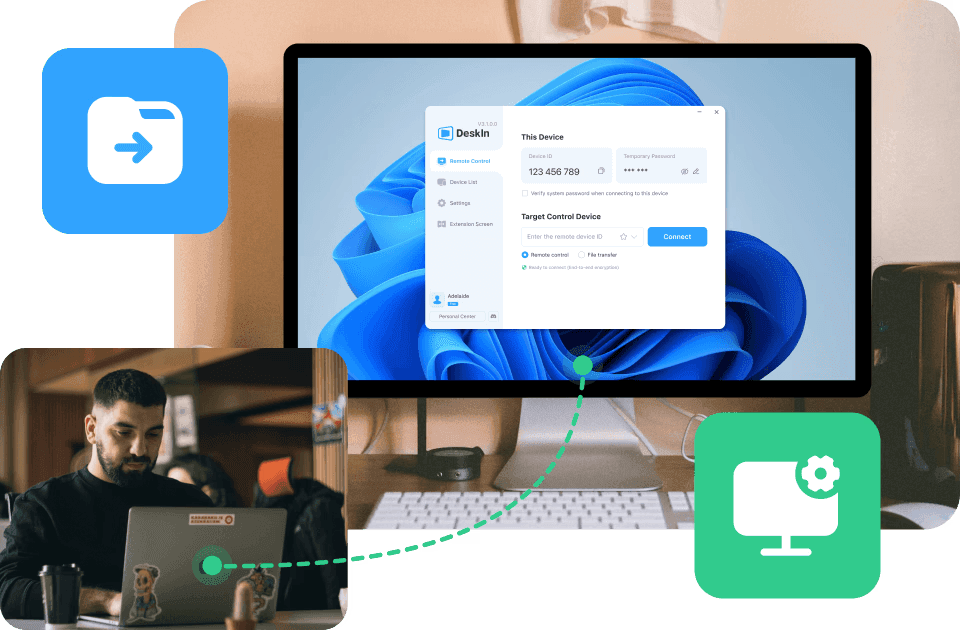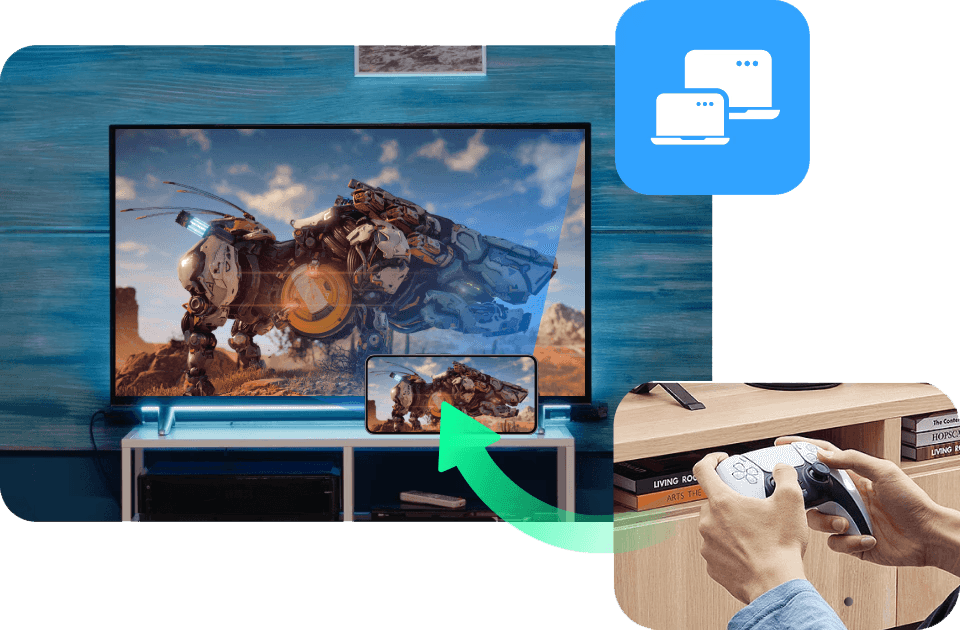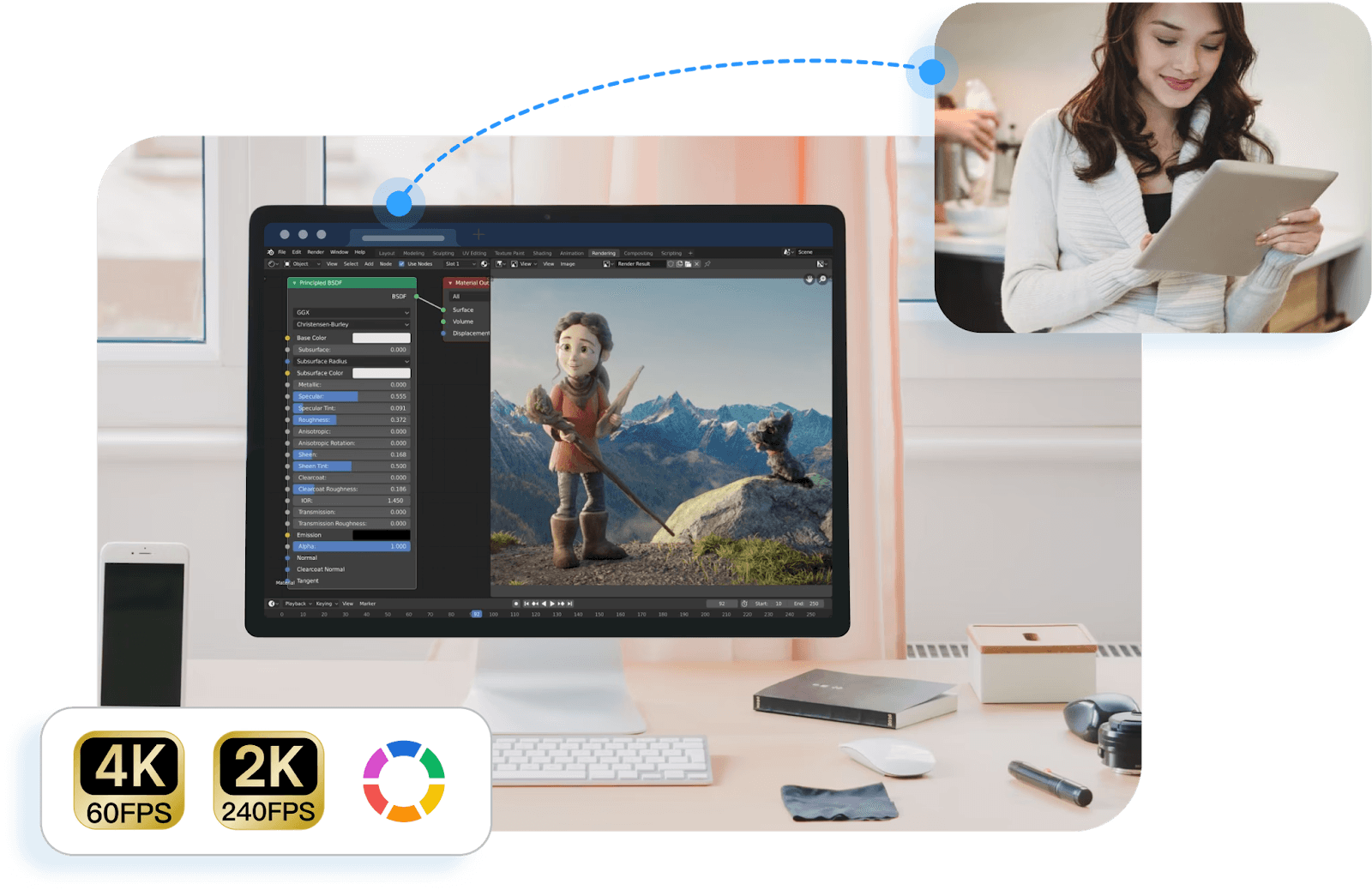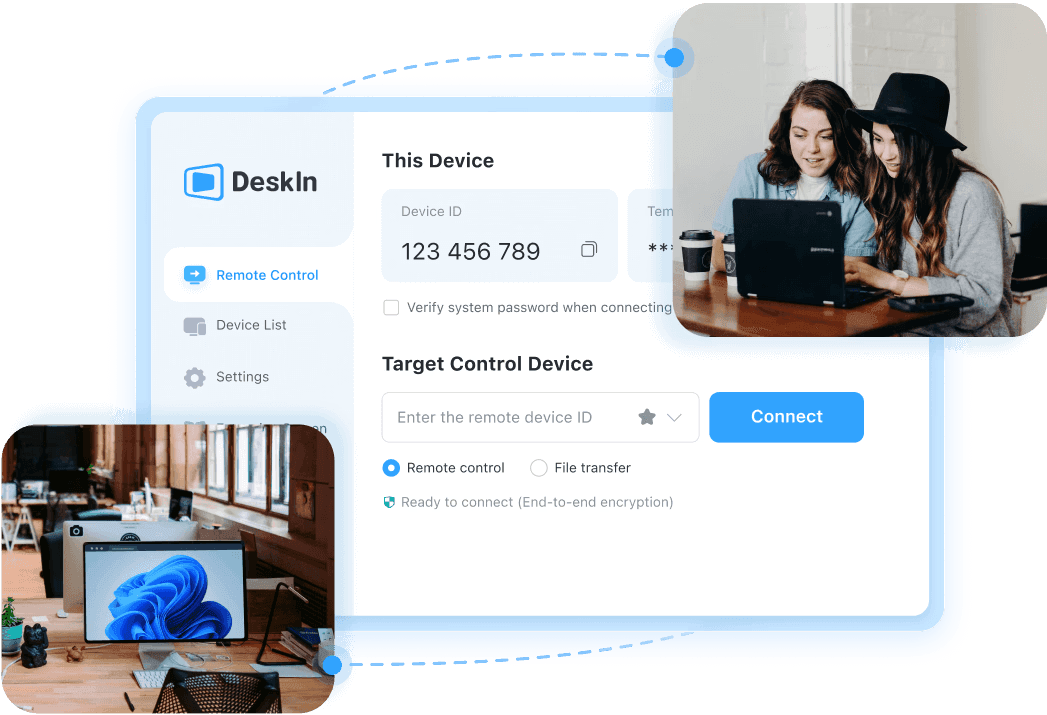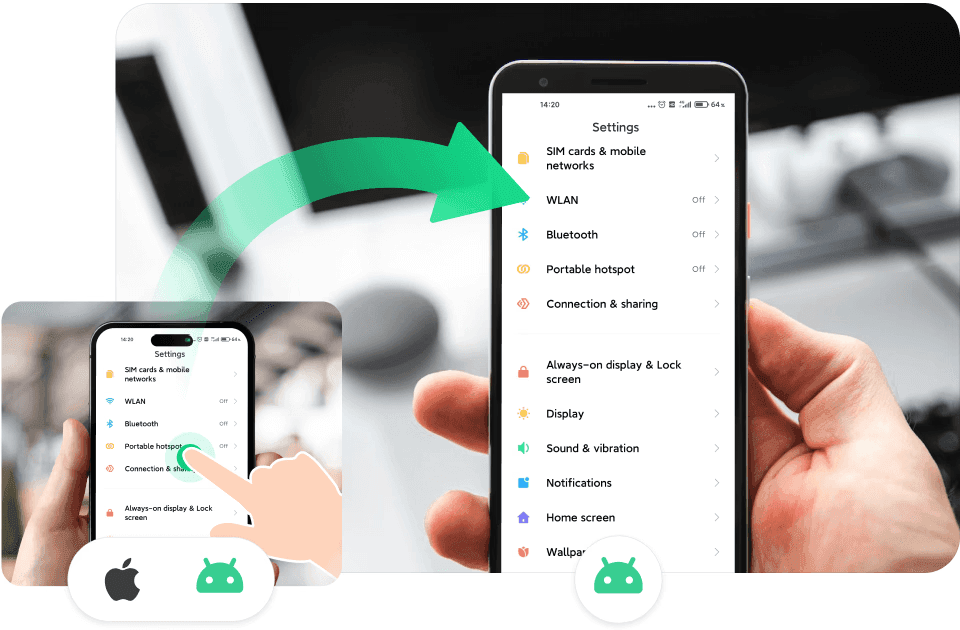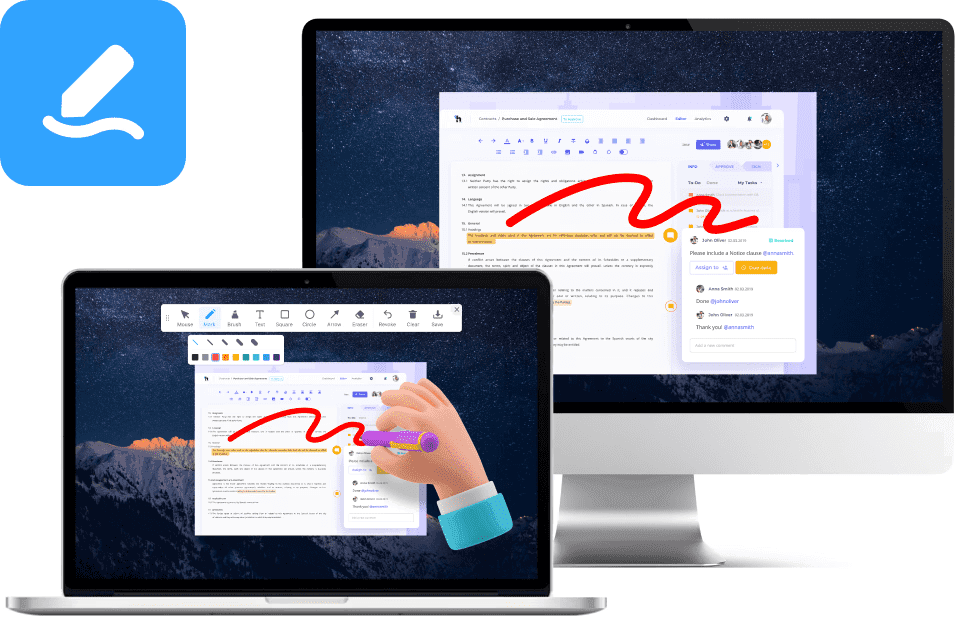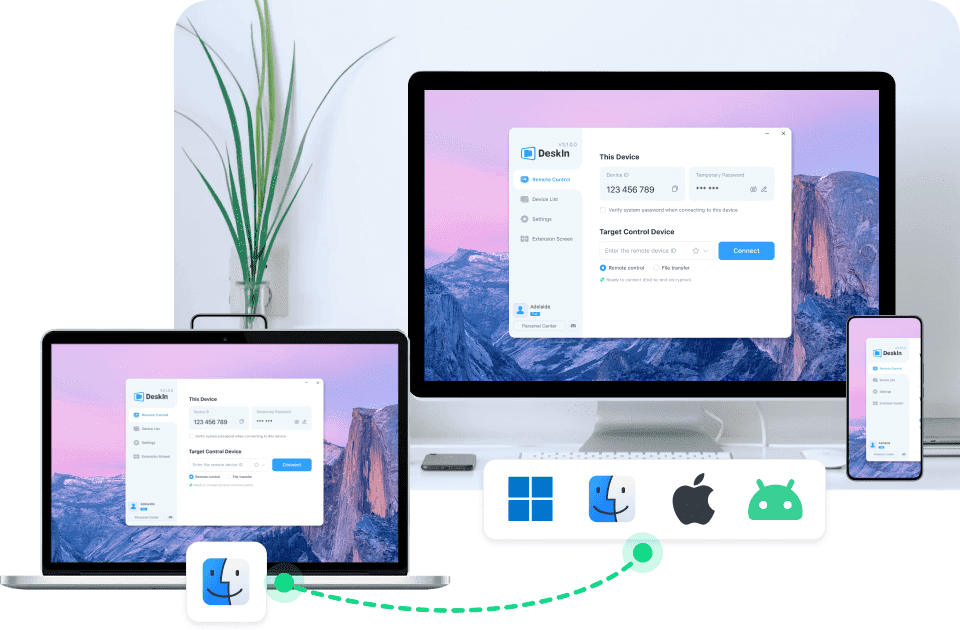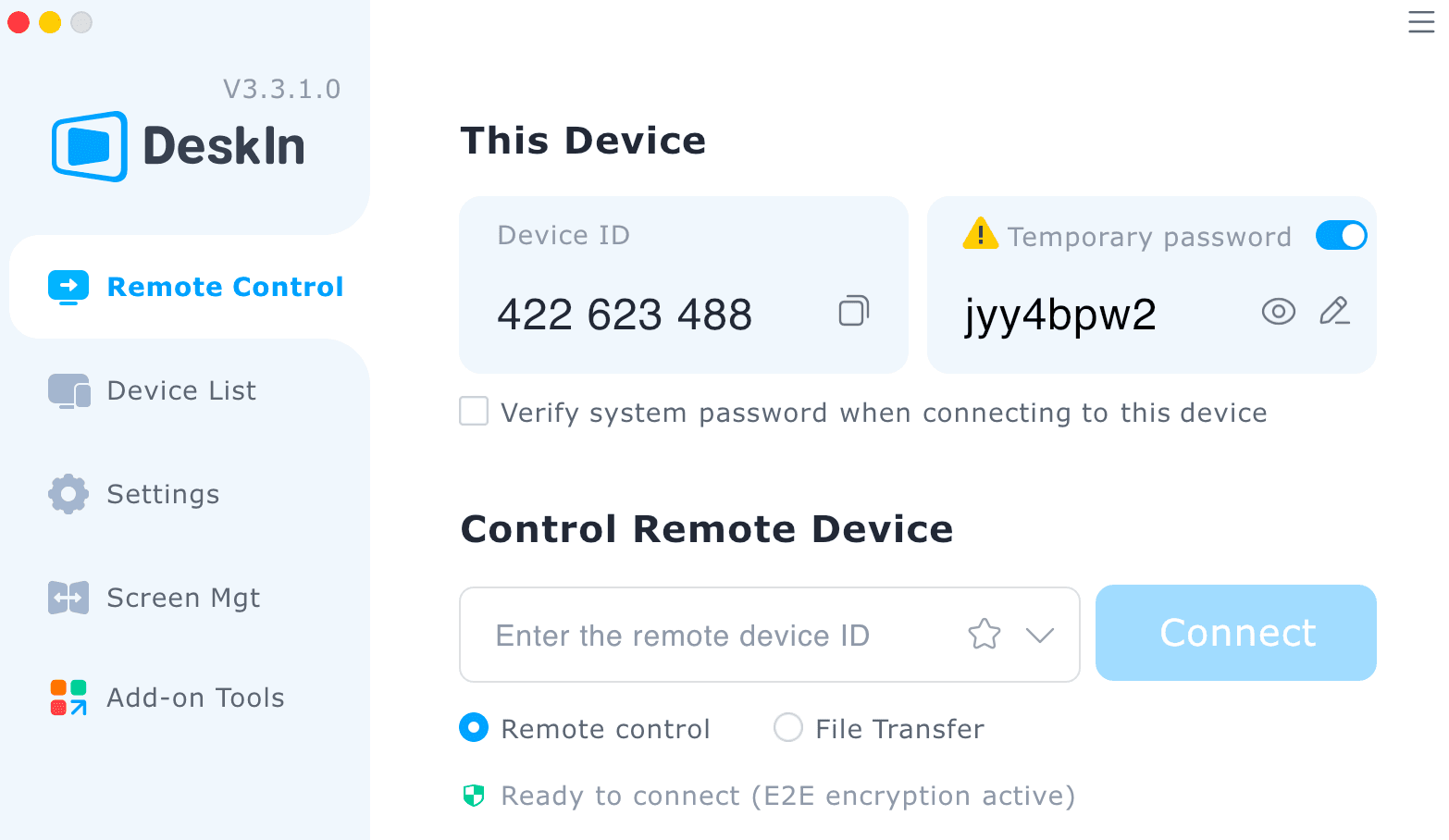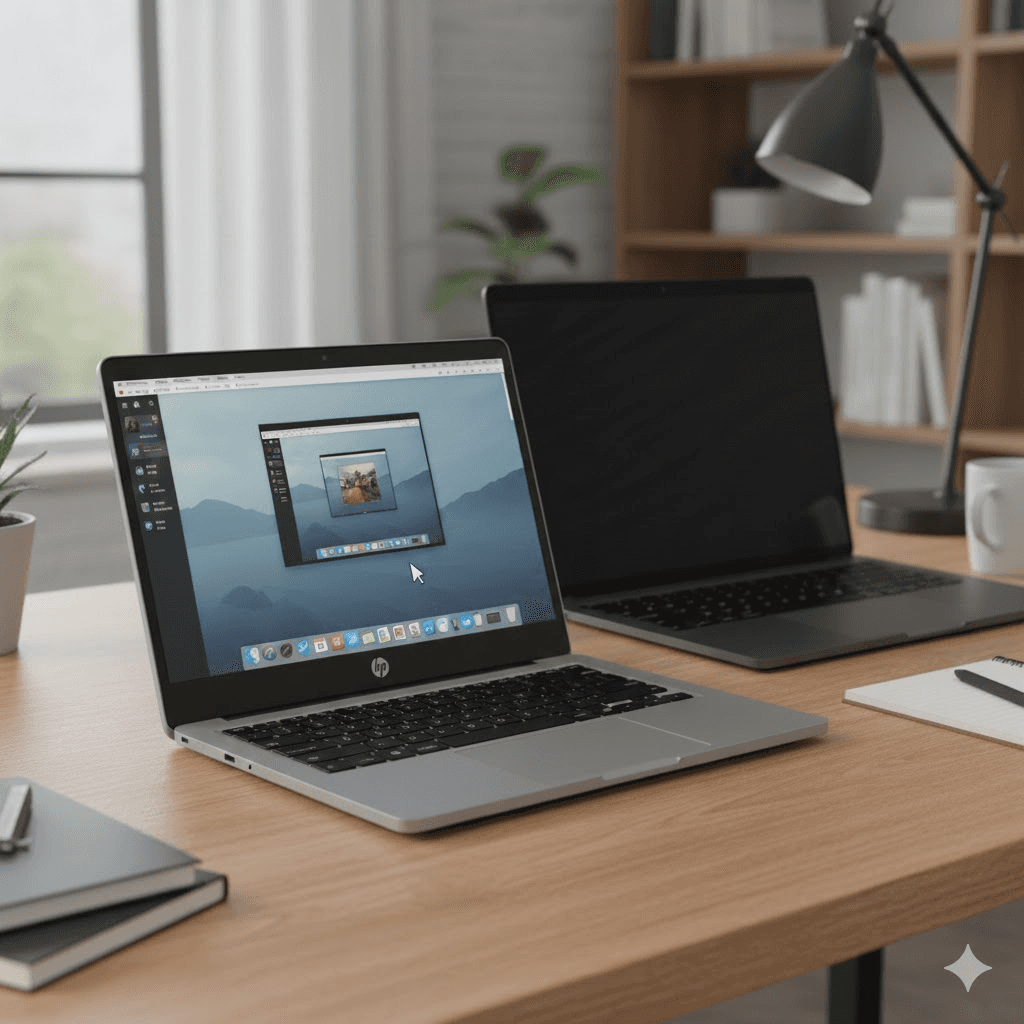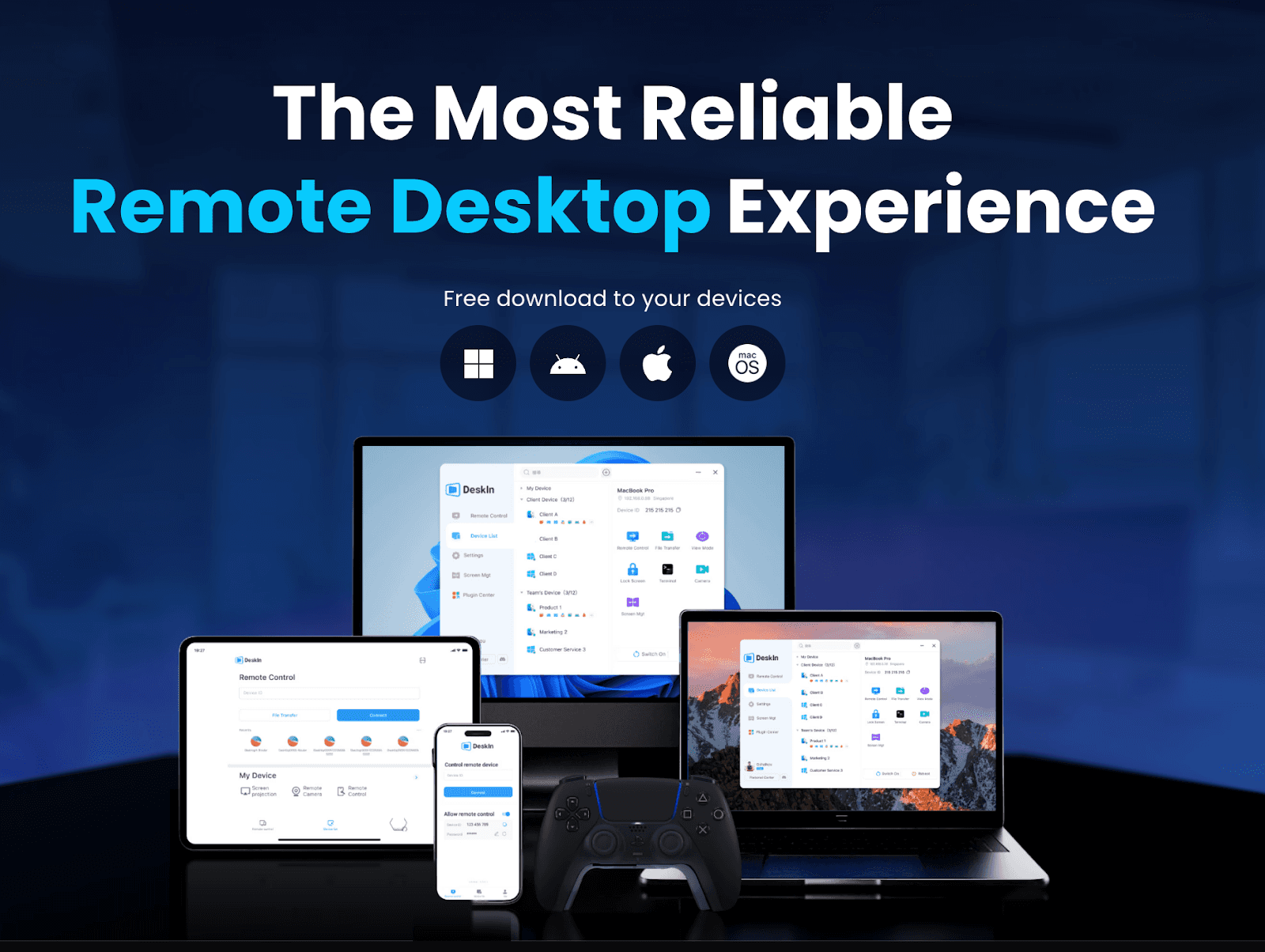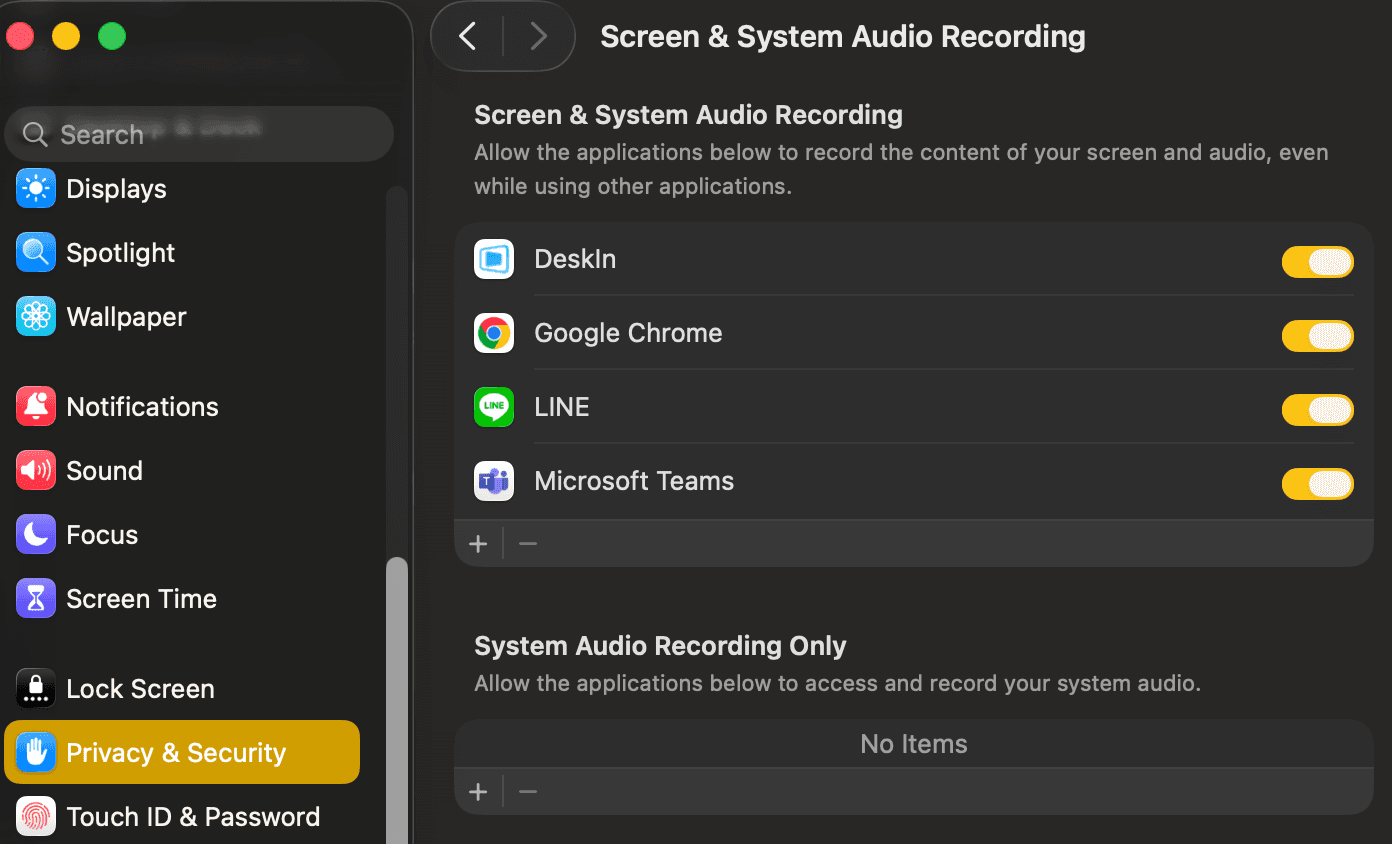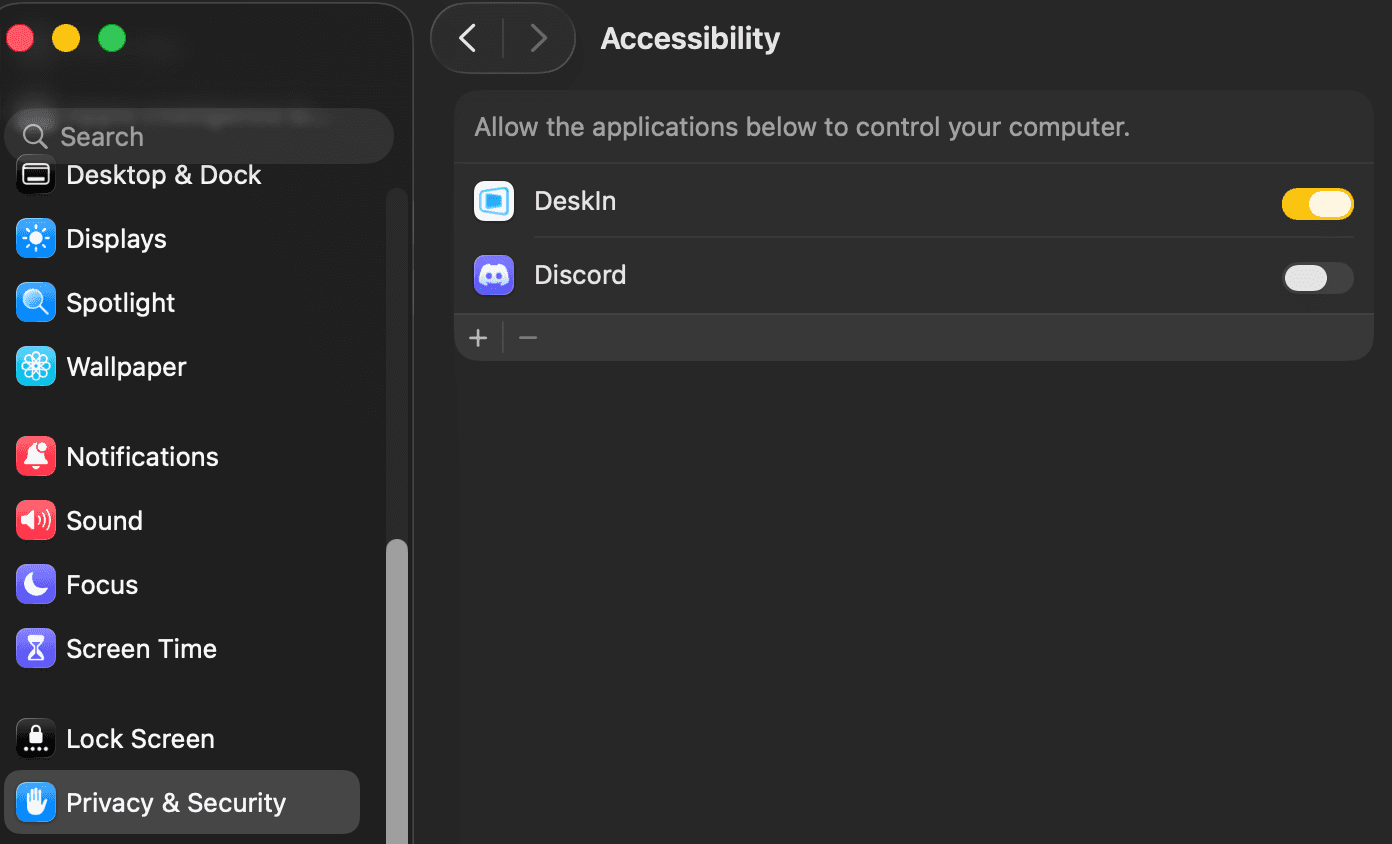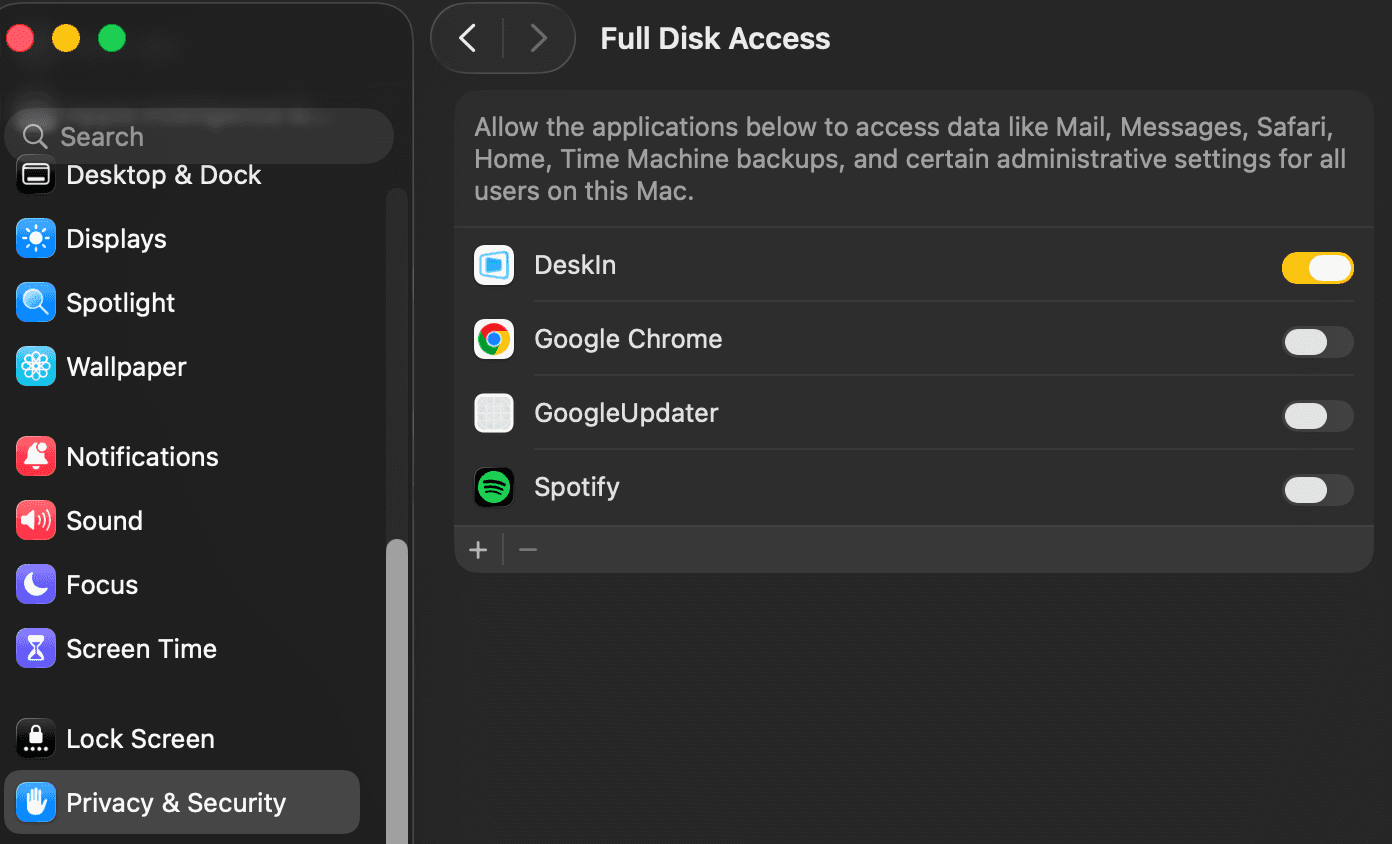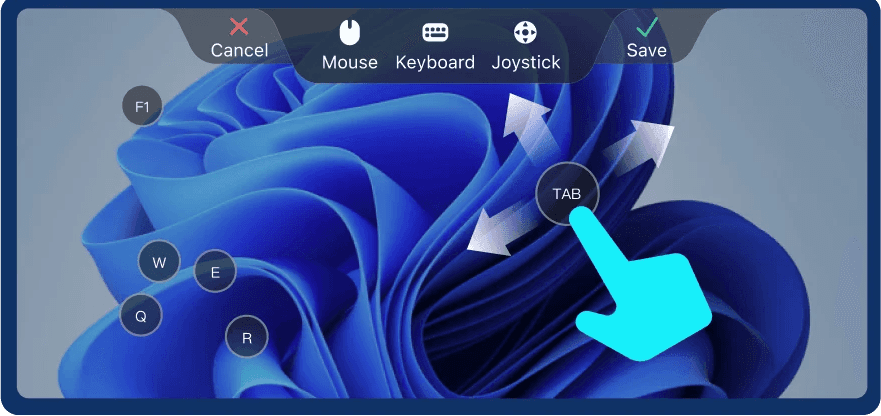Cách phản chiếu màn hình trên Android: Khám phá các công cụ & phương pháp tốt nhất
Với các chuyên gia văn phòng luôn phải thao tác với các bài thuyết trình và công việc hợp tác, tất cả chúng ta đều gặp khó khăn trong việc tìm hiểu cách phản chiếu màn hình trên Android một cách hiệu quả. Sau khi thử nghiệm vô số công cụ, tôi đã thu hẹp lại năm ứng dụng phản chiếu màn hình đáng tin cậy cho thấy cách chia sẻ nội dung giữa các thiết bị. Dù bạn cần phản chiếu điện thoại Android sang một điện thoại khác trong các cuộc họp nhóm, phát nội dung lên TV cho các cuộc họp với khách hàng, hay xử lý sự cố cho thiết bị của đồng nghiệp từ xa, những chương trình phản chiếu màn hình này sẽ loại bỏ rắc rối về cáp và vấn đề tương thích.
Từ những giải pháp không dây giữa các thiết bị đến các tính năng tích hợp sẵn trên Android, mỗi ứng dụng phục vụ cho các quy trình làm việc cụ thể đồng thời ưu tiên sự đơn giản và hiệu suất. Bạn đã sẵn sàng để tối ưu hóa các bài thuyết trình và tăng cường hiệu suất làm việc chưa? Hãy cùng khám phá những công cụ thay đổi cuộc chơi này đã biến những phiền phức hàng ngày của tôi trở thành quy trình làm việc liền mạch.
Phương pháp 1: Phản chiếu Android sang PC/Mac/iPhone/Tablet chỉ trong vài phút
Đối với một nhóm thường xuyên xử lý các công việc đa nền tảng, chúng tôi rất khuyến nghị DeskIn vì khả năng công cụ phản chiếu màn hình đa năng của nó. Dù chúng tôi đang gấp rút qua Wi-Fi sân bay hay chuẩn bị chỉnh sửa vào phút cuối tại nhà, DeskIn cho phép bạn ngay lập tức hiển thị phản chiếu các thiết bị Android, iPhone hoặc laptop lên bất kỳ màn hình nào.
Cần phản chiếu Android sang PC trong một buổi giới thiệu với khách hàng? Một cú nhấp chuột chia sẻ giao diện điện thoại của bạn trên máy tính để bàn với độ trễ gần như bằng không. Đáng ngạc nhiên là giá cả hợp lý—chỉ tốn một phần ba so với các đối thủ—nó hỗ trợ Windows, macOS, iOS và Android. Phiên bản miễn phí bao gồm phản chiếu cơ bản, trong khi các gói trả phí mở rộng quản lý nhiều thiết bị và điều khiển từ xa Android. Đối với các nhóm phải xử lý các hệ sinh thái đa dạng, DeskIn giúp kết nối mà không làm vỡ ngân sách.
Tại sao chọn DeskIn cho phản chiếu màn hình không dây giữa các thiết bị:
4K Ultra HD & Độ trễ thấp 40ms: Hình ảnh rõ nét cho các đánh giá thiết kế và điều khiển theo thời gian thực mượt mà.
Phản chiếu đa nền tảng: Kéo dài không dây màn hình giữa các thiết bị Android, iOS, Windows và Mac (như kết nối hai điện thoại Android từ xa trong hệ sinh thái Samsung).
Mã hóa 256-bit bảo mật + Kiểm soát truy cập: Thêm thiết bị vào danh sách trắng và khóa màn hình trong các buổi thuyết trình nhạy cảm.
Chú thích trực tiếp & Bảng tạm chia sẻ: Đánh dấu trên các màn hình được chia sẻ và đồng bộ văn bản/tập tin ngay lập tức giữa các thiết bị.
Sử dụng DeskIn để phản chiếu màn hình Android không dây sang PC
Cần chia sẻ màn hình Android của bạn trong cuộc gọi nhóm hoặc khắc phục sự cố cho thiết bị của một đồng nghiệp? DeskIn đơn giản hóa cách nhân đôi màn hình điện thoại Android sang PC chỉ trong vài giây. Hãy cùng tìm hiểu các bước nhanh để bắt đầu.
Bước 1. Tải xuống và cài đặt DeskIn
Truy cập vào trang web chính thức của DeskIn trên cả điện thoại Android và PC của bạn. Tải xuống phiên bản phù hợp cho mỗi thiết bị và hoàn tất quá trình cài đặt.
Nhấp vào đây để tải xuống DeskIn

Bước 2. Tạo và đăng nhập vào tài khoản DeskIn của bạn
Mở ứng dụng DeskIn trên cả hai thiết bị và đăng nhập bằng cùng một tài khoản. Nếu bạn là người mới, hãy đăng ký bằng địa chỉ email của bạn — bạn sẽ cần xác minh nó để bảo mật.
Bước 3. Liên kết các thiết bị và chọn chế độ kết nối
Khi đã đăng nhập, bạn sẽ thấy ID thiết bị và mật khẩu của điện thoại Android của bạn. Nhập chúng vào máy tính của bạn, và khi chúng được kết nối thành công, bạn có thể phản chiếu màn hình của mình theo thời gian thực.

Bước 4. Bắt đầu kết nối
Thực hiện theo các hướng dẫn để khởi động phiên làm việc. DeskIn sẽ tự động thiết lập một kết nối an toàn. Tùy thuộc vào nhu cầu của bạn, bạn có thể kích hoạt các tính năng bổ sung như nhắn tin, gọi điện thoại hoặc bảng trắng trong cài đặt ứng dụng. Những công cụ này tích hợp liền mạch với phản chiếu màn hình, cho phép bạn trình bày tài liệu, trình diễn thiết kế, hoặc hợp tác theo thời gian thực trong các cuộc họp với khách hàng. Tăng cường thảo luận của bạn bằng cách chuyển đổi giữa các màn hình được chia sẻ và bảng trắng tương tác để có phản hồi năng động.
Phương pháp 2: Phản chiếu Android sang TV với tính năng tích hợp sẵn trên Android
Khi các nhân viên văn phòng phải làm việc với nhiều thiết bị, chúng tôi thường sử dụng Miracast để chia sẻ nhanh màn hình Android sang Android hay kết nối Android với PC. Tính năng này được tích hợp trong hầu hết các điện thoại Android (4.2+) như Samsung, nó phản chiếu không dây màn hình lên TV, máy chiếu hoặc máy tính Windows mà không cần cáp. Với độ rõ nét 1080P và độ trễ dưới 50ms, rất lý tưởng cho việc chơi game hoặc trình bày slide một cách mượt mà, ngay cả trên Wi-Fi không ổn định.
Để phản chiếu màn hình Samsung sang TV không phải Samsung, Miracast dễ dàng kết nối thương hiệu mà không gặp trở ngại. Mã hóa WPA2 bảo vệ nội dung được chia sẻ trong các cuộc họp, mặc dù trò chuyện thoại theo thời gian thực yêu cầu ứng dụng bên thứ ba như Zoom. Dù phát bảng tính hay phát chương trình mà không cần tay, "HDMI không dây" miễn phí này giúp quy trình làm việc của chúng tôi an toàn và đơn giản.
Dễ dàng phản chiếu màn hình Android sang TV qua Miracast. Bạn cần phản chiếu màn hình điện thoại Android để thuyết trình cho khách hàng hoặc một buổi chiếu phim vào cuối tuần? Miracast cho phép bạn phát màn hình Android của mình lên bất kỳ TV tương thích nào chỉ trong vài giây—không cần ứng dụng hay cáp.
Bước 1. Đảm bảo TV và Android của bạn được kết nối cùng một mạng Wi-Fi.
Bước 2. Bật "Phản chiếu màn hình" từ menu đầu vào của TV.

Bước 3. Bật "Phản chiếu màn hình" trong ứng dụng cài đặt của điện thoại thông minh của bạn trong menu "Màn hình không dây".
Bước 4. Chọn TV của bạn từ danh sách các thiết bị.
Bước 5. Thực hiện theo hướng dẫn trên màn hình để hoàn tất cài đặt. Đôi khi điều này yêu cầu nhập một mã hiển thị trên TV vào điện thoại thông minh của bạn để thiết lập kết nối.
Phương pháp 3: Chia sẻ màn hình điện thoại Android với công cụ phản chiếu màn hình tích hợp của Samsung/OnePlus
Khi nhóm của chúng tôi cần phát nhanh hình ảnh từ Android sang thiết bị Android, chúng tôi sử dụng công cụ Chia sẻ màn hình tích hợp của Samsung và OnePlus. Được thiết kế cho việc chia sẻ màn hình liền mạch trong các tác vụ Android, nó cho phép chúng tôi phản chiếu màn hình giữa các điện thoại hoặc máy tính bảng chỉ với một cú nhấp—rất lý tưởng cho việc chỉnh sửa hợp tác hoặc xử lý sự cố từ xa. Để phản chiếu màn hình từ các mẫu Samsung sang các điện thoại Android khác, chỉ cần bật Chia sẻ màn hình trong bảng thông báo, chọn thiết bị mục tiêu và bắt đầu chia sẻ.
Khác với các ứng dụng bên thứ ba, nó hỗ trợ trò chuyện thoại và vẽ trên màn hình trong quá trình phản chiếu, hoàn hảo cho việc ghi chú thiết kế hoặc hướng dẫn đồng nghiệp trực tiếp. Mặc dù chủ yếu được tối ưu hóa cho các thiết bị cùng thương hiệu (như kết nối hai điện thoại Android từ xa trong hệ sinh thái Samsung), nó vẫn duy trì độ truyền 1080P ổn định với độ trễ tối thiểu. Đây là một giải pháp đơn giản cho các nhóm ưu tiên tốc độ và tích hợp nguyên bản hơn là linh hoạt trên nhiều nền tảng.
Bật chia sẻ màn hình hợp tác với Chia sẻ màn hình
Cần chia sẻ màn hình với các thiết bị Android cho làm việc nhóm theo thời gian thực hoặc đào tạo? Công cụ Chia sẻ màn hình của Samsung và OnePlus cho phép chúng tôi phản chiếu màn hình ngay lập tức.
Bước 1. Tải xuống và cài đặt Chia sẻ màn hình trên cả hai thiết bị Android.
Bước 2. Khởi động ứng dụng, và từ một trong các điện thoại Android của bạn, nhấp vào tùy chọn "Chia sẻ" để cho phép điện thoại Android khác xem màn hình của bạn.

Bước 3. Sau đó, sử dụng một điện thoại Android khác, chọn "Hỗ trợ". Chỉ cần nhập mã PIN được cung cấp bởi điện thoại khác và nhấp vào "Kết nối" để truy cập màn hình kia trên điện thoại Android của bạn.

Phương pháp 4: Phản chiếu Android sang TV hoặc PC với ApowerMirror
Khi đội ngũ của chúng tôi cần một công cụ đa năng để phản chiếu các thiết bị Android sang TV hoặc laptop, ApowerMirror là lựa chọn hàng đầu của chúng tôi vì độ tin cậy. Nó xử lý cách phản chiếu màn hình điện thoại Android một cách dễ dàng, bất kể chúng tôi đang phát trực tiếp các trò chơi di động, trình bày các bảng điều khiển, hay phản chiếu điện thoại của một đồng nghiệp để hỗ trợ từ xa. Streaming với độ trễ thấp của ứng dụng khiến việc chú thích trong các cuộc họp trở nên tự nhiên, trong khi việc chuyển tập tin giữa các thiết bị tiết kiệm thời gian so với việc gửi email các bản nháp.
Khác với các công cụ phản chiếu cơ bản, ApowerMirror hỗ trợ cả kết nối không dây và USB, lý tưởng cho các môi trường Wi-Fi không ổn định. Người dùng miễn phí nhận được phản chiếu HD, trong khi các gói trả phí mở khóa tính năng ghi âm, điều khiển hai màn hình, và tính tương thích với iOS. Đối với các nhóm lai phải xử lý nhiều nền tảng, nó giống như một con dao Thụy Sĩ cho các giải pháp phản chiếu màn hình Android—không cần chuyên môn kỹ thuật.
Phản chiếu từ Android sang TV qua ApowerMirror
Khi đội của chúng tôi cần chia sẻ màn hình Android với TV để thuyết trình hoặc phát các trò chơi tại nhà, ApowerMirror mang đến trải nghiệm chia sẻ màn hình Android không gặp rắc rối.
Bước 1. Kết nối điện thoại Android của bạn và TV vào cùng một mạng LAN.
Bước 2. Tải ứng dụng ApowerMirror trên điện thoại Android của bạn.
Bước 3. Chạy ứng dụng trên điện thoại của bạn và nhấn nút phản chiếu màu xanh. Tìm TV của bạn và sau đó nhấn tên TV của bạn. Bạn cũng có thể quét mã QR trên TV của bạn để kết nối.

Phương pháp 5: Phản chiếu màn hình Android sang điện thoại khác qua AnyViewer
Đối với các nhóm ưu tiên sự đơn giản và tiết kiệm chi phí trong việc phản chiếu màn hình Android, AnyViewer cung cấp một giải pháp không phức tạp. Khác với các công cụ trước đó, nó tập trung hoàn toàn vào việc phản chiếu Android sang thiết bị Android mà không cần thiết lập. Chúng tôi sử dụng nó cho hỗ trợ CNTT nhanh chóng hoặc hướng dẫn khách hàng qua các thiết lập ứng dụng từ xa.
Mặc dù nó thiếu các tính năng nâng cao như chú thích trực tiếp hoặc cuộc gọi tích hợp, thiết kế nhẹ của nó đảm bảo hiệu suất ổn định ngay cả trên các mạng chậm hơn. Người dùng miễn phí nhận được phản chiếu cơ bản không giới hạn, làm cho nó trở nên lý tưởng cho các doanh nghiệp nhỏ hoặc sử dụng cá nhân. Nếu quy trình làm việc của bạn yêu cầu phản chiếu màn hình Android đơn giản mà không có tính năng phân tâm, AnyViewer giữ mọi thứ đơn giản và tiết kiệm chi phí.
Phản chiếu màn hình Android của bạn sang Android qua AnyViewer
Khi nhóm của chúng tôi cần hỗ trợ phản chiếu màn hình Android cơ bản mà không có các tính năng bổ sung, AnyViewer là giải pháp nhanh chóng của chúng tôi.
Thực hiện theo các bước dưới đây để tìm hiểu cách phản chiếu màn hình Android của bạn sang Android với AnyViewer.
Bước 1. Bắt đầu bằng cách tải xuống và cài đặt AnyViewer trên cả hai thiết bị Android của bạn.
Bước 2. Khởi động AnyViewer trên thiết bị cục bộ của bạn và đăng ký một tài khoản mới. Sau đó, đăng nhập bằng cùng một tài khoản trên cả hai thiết bị Android của bạn.
Bước 3. Trên thiết bị cục bộ của bạn, vào "Thiết bị" và chọn thiết bị Android mục tiêu mà bạn muốn chia sẻ màn hình. Sau đó, nhấp vào nó và chọn "Xem màn hình".
Bước 4. Trên thiết bị Android từ xa của bạn, cho phép bằng cách nhấn "Cho phép".

Bước 5. Chúc mừng, bạn đã phản chiếu thành công màn hình Android của mình sang một Android khác.
Cách chọn ứng dụng phản chiếu màn hình tốt nhất trên Android
Với tư cách là các chuyên gia văn phòng, chúng tôi ưu tiên hai yếu tố không thể thương lượng trong phần mềm phản chiếu màn hình: độ trễ thấp và bảo mật cao. Hãy tưởng tượng trình bày một đề xuất quan trọng chỉ để phải đối mặt với những khoản trễ khó xử giữa các chuyển tiếp slide—hoặc tệ hơn, vô tình phơi bày dữ liệu nhạy cảm trên một thiết bị không được ủy quyền. Sau khi thử nghiệm nhiều công cụ, chúng tôi luôn khuyến nghị DeskIn là ứng dụng phản chiếu màn hình tốt nhất cho công việc. Độ trễ dưới 40ms của nó giữ cho các bài thuyết trình đồng bộ, trong khi mã hóa 256-bit và danh sách thiết bị trắng ngăn ngừa các rò rỉ dữ liệu.
Mặc dù các ứng dụng như Miracast phục vụ cho các nhu cầu bình thường, nhưng chúng thường thiếu các kiểm soát bảo mật chi tiết. Tính linh hoạt đa nền tảng của DeskIn (Android, iOS, Windows, Mac) và các tính năng như in từ xa hoặc màn hình mở rộng biện minh cho giá trị của nó đối với các nhóm xử lý các công việc nhạy cảm. Hãy chọn các công cụ cân bằng hiệu suất với bảo vệ, quy trình làm việc của bạn (và tinh thần của bạn) sẽ cảm ơn bạn.
FAQs về phản chiếu màn hình trên Android
Bạn có thể phản chiếu màn hình mà không cần internet không?
Có, phần mềm phản chiếu màn hình ngoại tuyến như DeskIn hoặc Miracast cho phép chúng tôi phản chiếu màn hình mà không cần internet. Những công cụ này sử dụng kết nối Wi-Fi trực tiếp hoặc Bluetooth giữa các thiết bị, lý tưởng cho các cuộc họp an toàn trong khu vực có mạng không ổn định. Ví dụ, chế độ peer-to-peer của DeskIn hoặc tính năng "Màn hình không dây" của Miracast tạo ra các liên kết cục bộ mà không dựa vào máy chủ bên ngoài. Chỉ cần đảm bảo cả hai thiết bị hỗ trợ cùng một giao thức và nằm trong phạm vi. Lý tưởng cho các bài thuyết trình bí mật hoặc làm việc từ xa trong các khu vực có kết nối yếu.
Phản chiếu màn hình có hoạt động hai chiều không?
Phản chiếu màn hình thường hoạt động một chiều theo mặc định, như chiếu điện thoại của bạn lên TV. Tuy nhiên, các công cụ như DeskIn cho phép điều khiển hai chiều cho hợp tác theo thời gian thực, cho phép bạn tương tác với màn hình được phản chiếu (ví dụ: chỉnh sửa tài liệu trên PC từ điện thoại của bạn). Thật sự "phản chiếu" cho thấy nội dung giống hệt nhau trên cả hai thiết bị, trong khi phát sóng giấu màn hình nguồn. Hãy chọn các ứng dụng dựa trên việc bạn cần chia sẻ thụ động hay làm việc nhóm tương tác.
Phản chiếu màn hình an toàn đến mức nào?
Phản chiếu màn hình bản thân nó là an toàn khi sử dụng các công cụ được mã hóa, nhưng rủi ro phát sinh từ các kết nối Wi-Fi không bảo mật hoặc các ứng dụng không đáng tin cậy. Chúng tôi ưu tiên các ứng dụng như DeskIn, áp dụng mã hóa 256-bit và cho phép chúng tôi đưa các thiết bị đã phê duyệt vào danh sách trắng, chặn quyền truy cập trái phép. Luôn xác minh bảo mật mạng và tránh sử dụng Wi-Fi công cộng cho các công việc nhạy cảm. Đối với các quy trình làm việc bí mật, chế độ màn hình riêng tư của DeskIn thêm một lớp bảo vệ bổ sung bằng cách ẩn hoạt động cục bộ trong quá trình chia sẻ.
Kết luận
Chọn cách phản chiếu màn hình trên Android phụ thuộc vào quy trình làm việc của bạn. Đối với các chuyên gia đa nền tảng cần bảo mật, DeskIn giúp bạn phản chiếu màn hình với mã hóa giữa các thiết bị khác nhau. Nếu bạn cần phát nội dung từ điện thoại hoặc máy tính bảng Android lên TV/máy tính, bạn có thể thực hiện việc chiếu không dây nguyên bản thông qua Miracast; người dùng Samsung hoặc Yiga hợp tác với Windows/Mac, bạn có thể ưu tiên chức năng Chia sẻ màn hình của thương hiệu, đồng bộ hóa màn hình và tập tin một cách liền mạch; khi kết nối các thiết bị Android và iPhone, ApowerMirror là một lựa chọn tốt nhất, hỗ trợ truyền tải chất lượng hình ảnh HD và chú thích theo thời gian thực, phù hợp cho các cuộc họp hội nghị hoặc phát sóng trò chơi trực tiếp; và cho việc chia sẻ nhẹ giữa các thiết bị Android, AnyViewer có thể hoàn thành nhanh chóng việc phát hình ảnh không nén.
Với tư cách là nhân viên văn phòng, chúng tôi ưu tiên DeskIn vì sự kết hợp của độ trễ thấp, mã hóa cấp quân sự và khả năng tương thích dễ dàng trên Android, iOS, Windows và Mac. Dù là mở rộng màn hình tới iPad hay phản chiếu báo cáo bí mật, nó thích nghi với nhu cầu làm việc lai mà không làm giảm tốc độ hoặc độ an toàn. Đối với các chuyên gia muốn thành thạo việc phản chiếu màn hình trên Android một cách an toàn, DeskIn vẫn là lựa chọn hàng đầu về sự cân bằng giữa sức mạnh và sự đơn giản.
Cách phản chiếu màn hình trên Android: Khám phá các công cụ & phương pháp tốt nhất
Với các chuyên gia văn phòng luôn phải thao tác với các bài thuyết trình và công việc hợp tác, tất cả chúng ta đều gặp khó khăn trong việc tìm hiểu cách phản chiếu màn hình trên Android một cách hiệu quả. Sau khi thử nghiệm vô số công cụ, tôi đã thu hẹp lại năm ứng dụng phản chiếu màn hình đáng tin cậy cho thấy cách chia sẻ nội dung giữa các thiết bị. Dù bạn cần phản chiếu điện thoại Android sang một điện thoại khác trong các cuộc họp nhóm, phát nội dung lên TV cho các cuộc họp với khách hàng, hay xử lý sự cố cho thiết bị của đồng nghiệp từ xa, những chương trình phản chiếu màn hình này sẽ loại bỏ rắc rối về cáp và vấn đề tương thích.
Từ những giải pháp không dây giữa các thiết bị đến các tính năng tích hợp sẵn trên Android, mỗi ứng dụng phục vụ cho các quy trình làm việc cụ thể đồng thời ưu tiên sự đơn giản và hiệu suất. Bạn đã sẵn sàng để tối ưu hóa các bài thuyết trình và tăng cường hiệu suất làm việc chưa? Hãy cùng khám phá những công cụ thay đổi cuộc chơi này đã biến những phiền phức hàng ngày của tôi trở thành quy trình làm việc liền mạch.
Phương pháp 1: Phản chiếu Android sang PC/Mac/iPhone/Tablet chỉ trong vài phút
Đối với một nhóm thường xuyên xử lý các công việc đa nền tảng, chúng tôi rất khuyến nghị DeskIn vì khả năng công cụ phản chiếu màn hình đa năng của nó. Dù chúng tôi đang gấp rút qua Wi-Fi sân bay hay chuẩn bị chỉnh sửa vào phút cuối tại nhà, DeskIn cho phép bạn ngay lập tức hiển thị phản chiếu các thiết bị Android, iPhone hoặc laptop lên bất kỳ màn hình nào.
Cần phản chiếu Android sang PC trong một buổi giới thiệu với khách hàng? Một cú nhấp chuột chia sẻ giao diện điện thoại của bạn trên máy tính để bàn với độ trễ gần như bằng không. Đáng ngạc nhiên là giá cả hợp lý—chỉ tốn một phần ba so với các đối thủ—nó hỗ trợ Windows, macOS, iOS và Android. Phiên bản miễn phí bao gồm phản chiếu cơ bản, trong khi các gói trả phí mở rộng quản lý nhiều thiết bị và điều khiển từ xa Android. Đối với các nhóm phải xử lý các hệ sinh thái đa dạng, DeskIn giúp kết nối mà không làm vỡ ngân sách.
Tại sao chọn DeskIn cho phản chiếu màn hình không dây giữa các thiết bị:
4K Ultra HD & Độ trễ thấp 40ms: Hình ảnh rõ nét cho các đánh giá thiết kế và điều khiển theo thời gian thực mượt mà.
Phản chiếu đa nền tảng: Kéo dài không dây màn hình giữa các thiết bị Android, iOS, Windows và Mac (như kết nối hai điện thoại Android từ xa trong hệ sinh thái Samsung).
Mã hóa 256-bit bảo mật + Kiểm soát truy cập: Thêm thiết bị vào danh sách trắng và khóa màn hình trong các buổi thuyết trình nhạy cảm.
Chú thích trực tiếp & Bảng tạm chia sẻ: Đánh dấu trên các màn hình được chia sẻ và đồng bộ văn bản/tập tin ngay lập tức giữa các thiết bị.
Sử dụng DeskIn để phản chiếu màn hình Android không dây sang PC
Cần chia sẻ màn hình Android của bạn trong cuộc gọi nhóm hoặc khắc phục sự cố cho thiết bị của một đồng nghiệp? DeskIn đơn giản hóa cách nhân đôi màn hình điện thoại Android sang PC chỉ trong vài giây. Hãy cùng tìm hiểu các bước nhanh để bắt đầu.
Bước 1. Tải xuống và cài đặt DeskIn
Truy cập vào trang web chính thức của DeskIn trên cả điện thoại Android và PC của bạn. Tải xuống phiên bản phù hợp cho mỗi thiết bị và hoàn tất quá trình cài đặt.
Nhấp vào đây để tải xuống DeskIn

Bước 2. Tạo và đăng nhập vào tài khoản DeskIn của bạn
Mở ứng dụng DeskIn trên cả hai thiết bị và đăng nhập bằng cùng một tài khoản. Nếu bạn là người mới, hãy đăng ký bằng địa chỉ email của bạn — bạn sẽ cần xác minh nó để bảo mật.
Bước 3. Liên kết các thiết bị và chọn chế độ kết nối
Khi đã đăng nhập, bạn sẽ thấy ID thiết bị và mật khẩu của điện thoại Android của bạn. Nhập chúng vào máy tính của bạn, và khi chúng được kết nối thành công, bạn có thể phản chiếu màn hình của mình theo thời gian thực.

Bước 4. Bắt đầu kết nối
Thực hiện theo các hướng dẫn để khởi động phiên làm việc. DeskIn sẽ tự động thiết lập một kết nối an toàn. Tùy thuộc vào nhu cầu của bạn, bạn có thể kích hoạt các tính năng bổ sung như nhắn tin, gọi điện thoại hoặc bảng trắng trong cài đặt ứng dụng. Những công cụ này tích hợp liền mạch với phản chiếu màn hình, cho phép bạn trình bày tài liệu, trình diễn thiết kế, hoặc hợp tác theo thời gian thực trong các cuộc họp với khách hàng. Tăng cường thảo luận của bạn bằng cách chuyển đổi giữa các màn hình được chia sẻ và bảng trắng tương tác để có phản hồi năng động.
Phương pháp 2: Phản chiếu Android sang TV với tính năng tích hợp sẵn trên Android
Khi các nhân viên văn phòng phải làm việc với nhiều thiết bị, chúng tôi thường sử dụng Miracast để chia sẻ nhanh màn hình Android sang Android hay kết nối Android với PC. Tính năng này được tích hợp trong hầu hết các điện thoại Android (4.2+) như Samsung, nó phản chiếu không dây màn hình lên TV, máy chiếu hoặc máy tính Windows mà không cần cáp. Với độ rõ nét 1080P và độ trễ dưới 50ms, rất lý tưởng cho việc chơi game hoặc trình bày slide một cách mượt mà, ngay cả trên Wi-Fi không ổn định.
Để phản chiếu màn hình Samsung sang TV không phải Samsung, Miracast dễ dàng kết nối thương hiệu mà không gặp trở ngại. Mã hóa WPA2 bảo vệ nội dung được chia sẻ trong các cuộc họp, mặc dù trò chuyện thoại theo thời gian thực yêu cầu ứng dụng bên thứ ba như Zoom. Dù phát bảng tính hay phát chương trình mà không cần tay, "HDMI không dây" miễn phí này giúp quy trình làm việc của chúng tôi an toàn và đơn giản.
Dễ dàng phản chiếu màn hình Android sang TV qua Miracast. Bạn cần phản chiếu màn hình điện thoại Android để thuyết trình cho khách hàng hoặc một buổi chiếu phim vào cuối tuần? Miracast cho phép bạn phát màn hình Android của mình lên bất kỳ TV tương thích nào chỉ trong vài giây—không cần ứng dụng hay cáp.
Bước 1. Đảm bảo TV và Android của bạn được kết nối cùng một mạng Wi-Fi.
Bước 2. Bật "Phản chiếu màn hình" từ menu đầu vào của TV.

Bước 3. Bật "Phản chiếu màn hình" trong ứng dụng cài đặt của điện thoại thông minh của bạn trong menu "Màn hình không dây".
Bước 4. Chọn TV của bạn từ danh sách các thiết bị.
Bước 5. Thực hiện theo hướng dẫn trên màn hình để hoàn tất cài đặt. Đôi khi điều này yêu cầu nhập một mã hiển thị trên TV vào điện thoại thông minh của bạn để thiết lập kết nối.
Phương pháp 3: Chia sẻ màn hình điện thoại Android với công cụ phản chiếu màn hình tích hợp của Samsung/OnePlus
Khi nhóm của chúng tôi cần phát nhanh hình ảnh từ Android sang thiết bị Android, chúng tôi sử dụng công cụ Chia sẻ màn hình tích hợp của Samsung và OnePlus. Được thiết kế cho việc chia sẻ màn hình liền mạch trong các tác vụ Android, nó cho phép chúng tôi phản chiếu màn hình giữa các điện thoại hoặc máy tính bảng chỉ với một cú nhấp—rất lý tưởng cho việc chỉnh sửa hợp tác hoặc xử lý sự cố từ xa. Để phản chiếu màn hình từ các mẫu Samsung sang các điện thoại Android khác, chỉ cần bật Chia sẻ màn hình trong bảng thông báo, chọn thiết bị mục tiêu và bắt đầu chia sẻ.
Khác với các ứng dụng bên thứ ba, nó hỗ trợ trò chuyện thoại và vẽ trên màn hình trong quá trình phản chiếu, hoàn hảo cho việc ghi chú thiết kế hoặc hướng dẫn đồng nghiệp trực tiếp. Mặc dù chủ yếu được tối ưu hóa cho các thiết bị cùng thương hiệu (như kết nối hai điện thoại Android từ xa trong hệ sinh thái Samsung), nó vẫn duy trì độ truyền 1080P ổn định với độ trễ tối thiểu. Đây là một giải pháp đơn giản cho các nhóm ưu tiên tốc độ và tích hợp nguyên bản hơn là linh hoạt trên nhiều nền tảng.
Bật chia sẻ màn hình hợp tác với Chia sẻ màn hình
Cần chia sẻ màn hình với các thiết bị Android cho làm việc nhóm theo thời gian thực hoặc đào tạo? Công cụ Chia sẻ màn hình của Samsung và OnePlus cho phép chúng tôi phản chiếu màn hình ngay lập tức.
Bước 1. Tải xuống và cài đặt Chia sẻ màn hình trên cả hai thiết bị Android.
Bước 2. Khởi động ứng dụng, và từ một trong các điện thoại Android của bạn, nhấp vào tùy chọn "Chia sẻ" để cho phép điện thoại Android khác xem màn hình của bạn.

Bước 3. Sau đó, sử dụng một điện thoại Android khác, chọn "Hỗ trợ". Chỉ cần nhập mã PIN được cung cấp bởi điện thoại khác và nhấp vào "Kết nối" để truy cập màn hình kia trên điện thoại Android của bạn.

Phương pháp 4: Phản chiếu Android sang TV hoặc PC với ApowerMirror
Khi đội ngũ của chúng tôi cần một công cụ đa năng để phản chiếu các thiết bị Android sang TV hoặc laptop, ApowerMirror là lựa chọn hàng đầu của chúng tôi vì độ tin cậy. Nó xử lý cách phản chiếu màn hình điện thoại Android một cách dễ dàng, bất kể chúng tôi đang phát trực tiếp các trò chơi di động, trình bày các bảng điều khiển, hay phản chiếu điện thoại của một đồng nghiệp để hỗ trợ từ xa. Streaming với độ trễ thấp của ứng dụng khiến việc chú thích trong các cuộc họp trở nên tự nhiên, trong khi việc chuyển tập tin giữa các thiết bị tiết kiệm thời gian so với việc gửi email các bản nháp.
Khác với các công cụ phản chiếu cơ bản, ApowerMirror hỗ trợ cả kết nối không dây và USB, lý tưởng cho các môi trường Wi-Fi không ổn định. Người dùng miễn phí nhận được phản chiếu HD, trong khi các gói trả phí mở khóa tính năng ghi âm, điều khiển hai màn hình, và tính tương thích với iOS. Đối với các nhóm lai phải xử lý nhiều nền tảng, nó giống như một con dao Thụy Sĩ cho các giải pháp phản chiếu màn hình Android—không cần chuyên môn kỹ thuật.
Phản chiếu từ Android sang TV qua ApowerMirror
Khi đội của chúng tôi cần chia sẻ màn hình Android với TV để thuyết trình hoặc phát các trò chơi tại nhà, ApowerMirror mang đến trải nghiệm chia sẻ màn hình Android không gặp rắc rối.
Bước 1. Kết nối điện thoại Android của bạn và TV vào cùng một mạng LAN.
Bước 2. Tải ứng dụng ApowerMirror trên điện thoại Android của bạn.
Bước 3. Chạy ứng dụng trên điện thoại của bạn và nhấn nút phản chiếu màu xanh. Tìm TV của bạn và sau đó nhấn tên TV của bạn. Bạn cũng có thể quét mã QR trên TV của bạn để kết nối.

Phương pháp 5: Phản chiếu màn hình Android sang điện thoại khác qua AnyViewer
Đối với các nhóm ưu tiên sự đơn giản và tiết kiệm chi phí trong việc phản chiếu màn hình Android, AnyViewer cung cấp một giải pháp không phức tạp. Khác với các công cụ trước đó, nó tập trung hoàn toàn vào việc phản chiếu Android sang thiết bị Android mà không cần thiết lập. Chúng tôi sử dụng nó cho hỗ trợ CNTT nhanh chóng hoặc hướng dẫn khách hàng qua các thiết lập ứng dụng từ xa.
Mặc dù nó thiếu các tính năng nâng cao như chú thích trực tiếp hoặc cuộc gọi tích hợp, thiết kế nhẹ của nó đảm bảo hiệu suất ổn định ngay cả trên các mạng chậm hơn. Người dùng miễn phí nhận được phản chiếu cơ bản không giới hạn, làm cho nó trở nên lý tưởng cho các doanh nghiệp nhỏ hoặc sử dụng cá nhân. Nếu quy trình làm việc của bạn yêu cầu phản chiếu màn hình Android đơn giản mà không có tính năng phân tâm, AnyViewer giữ mọi thứ đơn giản và tiết kiệm chi phí.
Phản chiếu màn hình Android của bạn sang Android qua AnyViewer
Khi nhóm của chúng tôi cần hỗ trợ phản chiếu màn hình Android cơ bản mà không có các tính năng bổ sung, AnyViewer là giải pháp nhanh chóng của chúng tôi.
Thực hiện theo các bước dưới đây để tìm hiểu cách phản chiếu màn hình Android của bạn sang Android với AnyViewer.
Bước 1. Bắt đầu bằng cách tải xuống và cài đặt AnyViewer trên cả hai thiết bị Android của bạn.
Bước 2. Khởi động AnyViewer trên thiết bị cục bộ của bạn và đăng ký một tài khoản mới. Sau đó, đăng nhập bằng cùng một tài khoản trên cả hai thiết bị Android của bạn.
Bước 3. Trên thiết bị cục bộ của bạn, vào "Thiết bị" và chọn thiết bị Android mục tiêu mà bạn muốn chia sẻ màn hình. Sau đó, nhấp vào nó và chọn "Xem màn hình".
Bước 4. Trên thiết bị Android từ xa của bạn, cho phép bằng cách nhấn "Cho phép".

Bước 5. Chúc mừng, bạn đã phản chiếu thành công màn hình Android của mình sang một Android khác.
Cách chọn ứng dụng phản chiếu màn hình tốt nhất trên Android
Với tư cách là các chuyên gia văn phòng, chúng tôi ưu tiên hai yếu tố không thể thương lượng trong phần mềm phản chiếu màn hình: độ trễ thấp và bảo mật cao. Hãy tưởng tượng trình bày một đề xuất quan trọng chỉ để phải đối mặt với những khoản trễ khó xử giữa các chuyển tiếp slide—hoặc tệ hơn, vô tình phơi bày dữ liệu nhạy cảm trên một thiết bị không được ủy quyền. Sau khi thử nghiệm nhiều công cụ, chúng tôi luôn khuyến nghị DeskIn là ứng dụng phản chiếu màn hình tốt nhất cho công việc. Độ trễ dưới 40ms của nó giữ cho các bài thuyết trình đồng bộ, trong khi mã hóa 256-bit và danh sách thiết bị trắng ngăn ngừa các rò rỉ dữ liệu.
Mặc dù các ứng dụng như Miracast phục vụ cho các nhu cầu bình thường, nhưng chúng thường thiếu các kiểm soát bảo mật chi tiết. Tính linh hoạt đa nền tảng của DeskIn (Android, iOS, Windows, Mac) và các tính năng như in từ xa hoặc màn hình mở rộng biện minh cho giá trị của nó đối với các nhóm xử lý các công việc nhạy cảm. Hãy chọn các công cụ cân bằng hiệu suất với bảo vệ, quy trình làm việc của bạn (và tinh thần của bạn) sẽ cảm ơn bạn.
FAQs về phản chiếu màn hình trên Android
Bạn có thể phản chiếu màn hình mà không cần internet không?
Có, phần mềm phản chiếu màn hình ngoại tuyến như DeskIn hoặc Miracast cho phép chúng tôi phản chiếu màn hình mà không cần internet. Những công cụ này sử dụng kết nối Wi-Fi trực tiếp hoặc Bluetooth giữa các thiết bị, lý tưởng cho các cuộc họp an toàn trong khu vực có mạng không ổn định. Ví dụ, chế độ peer-to-peer của DeskIn hoặc tính năng "Màn hình không dây" của Miracast tạo ra các liên kết cục bộ mà không dựa vào máy chủ bên ngoài. Chỉ cần đảm bảo cả hai thiết bị hỗ trợ cùng một giao thức và nằm trong phạm vi. Lý tưởng cho các bài thuyết trình bí mật hoặc làm việc từ xa trong các khu vực có kết nối yếu.
Phản chiếu màn hình có hoạt động hai chiều không?
Phản chiếu màn hình thường hoạt động một chiều theo mặc định, như chiếu điện thoại của bạn lên TV. Tuy nhiên, các công cụ như DeskIn cho phép điều khiển hai chiều cho hợp tác theo thời gian thực, cho phép bạn tương tác với màn hình được phản chiếu (ví dụ: chỉnh sửa tài liệu trên PC từ điện thoại của bạn). Thật sự "phản chiếu" cho thấy nội dung giống hệt nhau trên cả hai thiết bị, trong khi phát sóng giấu màn hình nguồn. Hãy chọn các ứng dụng dựa trên việc bạn cần chia sẻ thụ động hay làm việc nhóm tương tác.
Phản chiếu màn hình an toàn đến mức nào?
Phản chiếu màn hình bản thân nó là an toàn khi sử dụng các công cụ được mã hóa, nhưng rủi ro phát sinh từ các kết nối Wi-Fi không bảo mật hoặc các ứng dụng không đáng tin cậy. Chúng tôi ưu tiên các ứng dụng như DeskIn, áp dụng mã hóa 256-bit và cho phép chúng tôi đưa các thiết bị đã phê duyệt vào danh sách trắng, chặn quyền truy cập trái phép. Luôn xác minh bảo mật mạng và tránh sử dụng Wi-Fi công cộng cho các công việc nhạy cảm. Đối với các quy trình làm việc bí mật, chế độ màn hình riêng tư của DeskIn thêm một lớp bảo vệ bổ sung bằng cách ẩn hoạt động cục bộ trong quá trình chia sẻ.
Kết luận
Chọn cách phản chiếu màn hình trên Android phụ thuộc vào quy trình làm việc của bạn. Đối với các chuyên gia đa nền tảng cần bảo mật, DeskIn giúp bạn phản chiếu màn hình với mã hóa giữa các thiết bị khác nhau. Nếu bạn cần phát nội dung từ điện thoại hoặc máy tính bảng Android lên TV/máy tính, bạn có thể thực hiện việc chiếu không dây nguyên bản thông qua Miracast; người dùng Samsung hoặc Yiga hợp tác với Windows/Mac, bạn có thể ưu tiên chức năng Chia sẻ màn hình của thương hiệu, đồng bộ hóa màn hình và tập tin một cách liền mạch; khi kết nối các thiết bị Android và iPhone, ApowerMirror là một lựa chọn tốt nhất, hỗ trợ truyền tải chất lượng hình ảnh HD và chú thích theo thời gian thực, phù hợp cho các cuộc họp hội nghị hoặc phát sóng trò chơi trực tiếp; và cho việc chia sẻ nhẹ giữa các thiết bị Android, AnyViewer có thể hoàn thành nhanh chóng việc phát hình ảnh không nén.
Với tư cách là nhân viên văn phòng, chúng tôi ưu tiên DeskIn vì sự kết hợp của độ trễ thấp, mã hóa cấp quân sự và khả năng tương thích dễ dàng trên Android, iOS, Windows và Mac. Dù là mở rộng màn hình tới iPad hay phản chiếu báo cáo bí mật, nó thích nghi với nhu cầu làm việc lai mà không làm giảm tốc độ hoặc độ an toàn. Đối với các chuyên gia muốn thành thạo việc phản chiếu màn hình trên Android một cách an toàn, DeskIn vẫn là lựa chọn hàng đầu về sự cân bằng giữa sức mạnh và sự đơn giản.

Play x Work
All at Once
DeskIn Remote Game
only $14.32 USD 🎉 Limited on July 16-31
Add promo code: deskinsummer1





